BMP3005 Applied Business Finance: Financial Management and Improvement
VerifiedAdded on 2023/06/15
|12
|2574
|142
Report
AI Summary
This report provides an in-depth analysis of financial management's role in enhancing business performance. It defines financial management, discusses key financial statements (balance sheet, income statement, and cash flow statement) and the application of ratio analysis for assessing profitability, liquidity, and efficiency. The report includes a practical application using a provided template and Excel to create financial statements for a sample organization, followed by a case study analysis. Furthermore, it explores various strategies such as debt consolidation, maintaining positive income, minimizing overhead costs, seeking expert support, and liquidation of resources to improve a business's financial standing. The report concludes that effective financial management is crucial for sustainable business success.
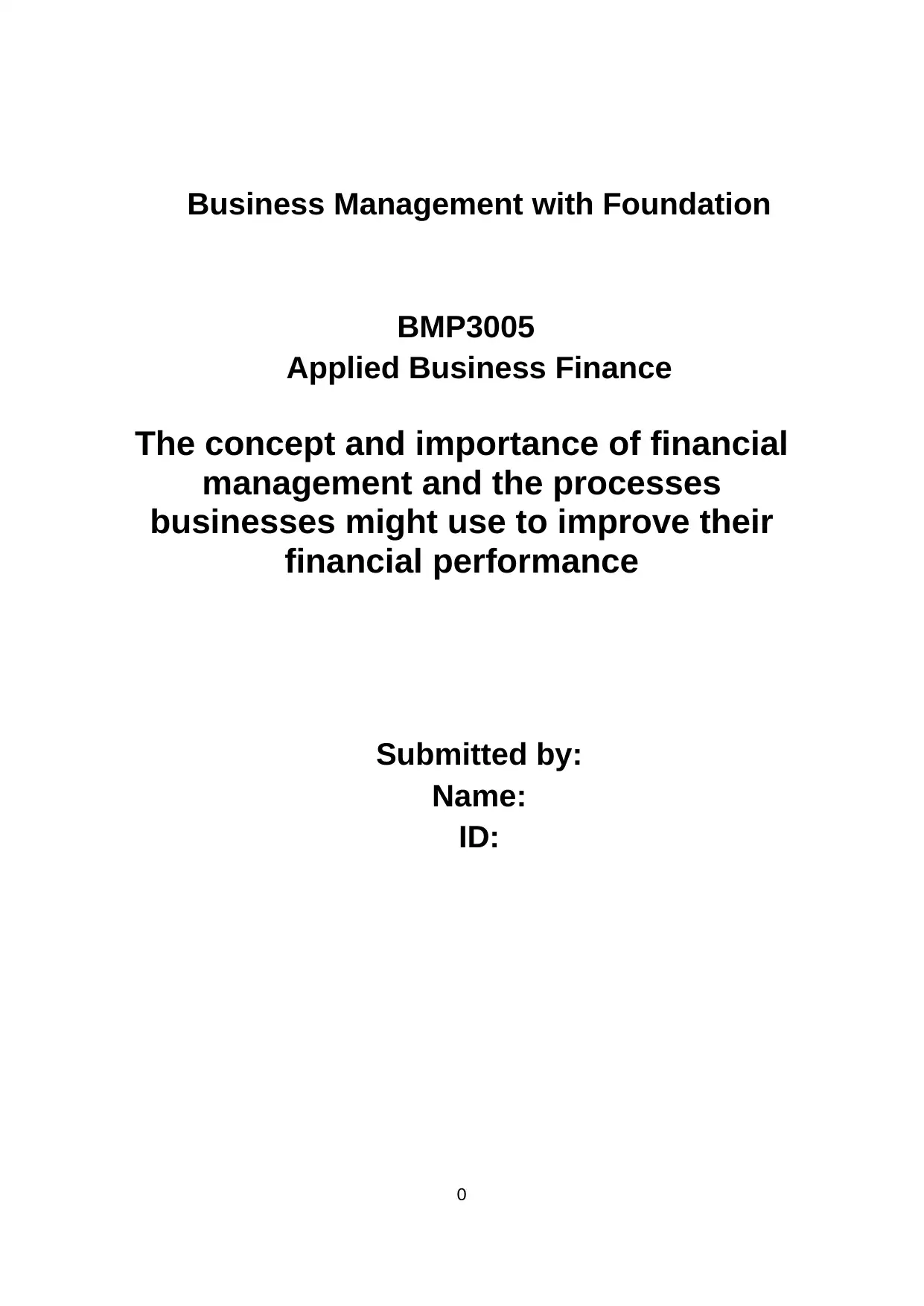
Business Management with Foundation
BMP3005
Applied Business Finance
The concept and importance of financial
management and the processes
businesses might use to improve their
financial performance
Submitted by:
Name:
ID:
0
BMP3005
Applied Business Finance
The concept and importance of financial
management and the processes
businesses might use to improve their
financial performance
Submitted by:
Name:
ID:
0
Paraphrase This Document
Need a fresh take? Get an instant paraphrase of this document with our AI Paraphraser
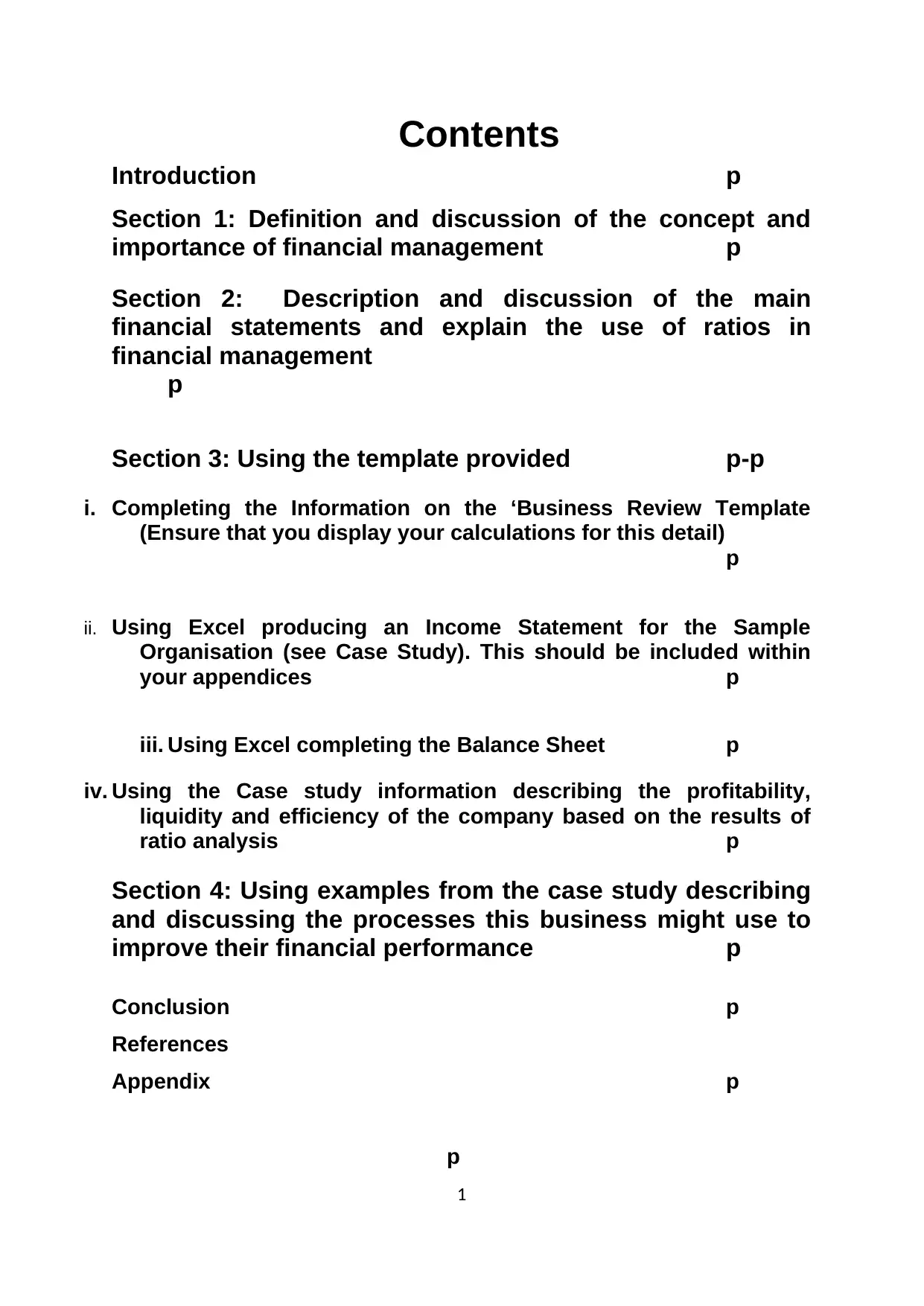
Contents
Introduction p
Section 1: Definition and discussion of the concept and
importance of financial management p
Section 2: Description and discussion of the main
financial statements and explain the use of ratios in
financial management
p
Section 3: Using the template provided p-p
i. Completing the Information on the ‘Business Review Template
(Ensure that you display your calculations for this detail)
p
ii. Using Excel producing an Income Statement for the Sample
Organisation (see Case Study). This should be included within
your appendices p
iii. Using Excel completing the Balance Sheet p
iv. Using the Case study information describing the profitability,
liquidity and efficiency of the company based on the results of
ratio analysis p
Section 4: Using examples from the case study describing
and discussing the processes this business might use to
improve their financial performance p
Conclusion p
References
Appendix p
p
1
Introduction p
Section 1: Definition and discussion of the concept and
importance of financial management p
Section 2: Description and discussion of the main
financial statements and explain the use of ratios in
financial management
p
Section 3: Using the template provided p-p
i. Completing the Information on the ‘Business Review Template
(Ensure that you display your calculations for this detail)
p
ii. Using Excel producing an Income Statement for the Sample
Organisation (see Case Study). This should be included within
your appendices p
iii. Using Excel completing the Balance Sheet p
iv. Using the Case study information describing the profitability,
liquidity and efficiency of the company based on the results of
ratio analysis p
Section 4: Using examples from the case study describing
and discussing the processes this business might use to
improve their financial performance p
Conclusion p
References
Appendix p
p
1
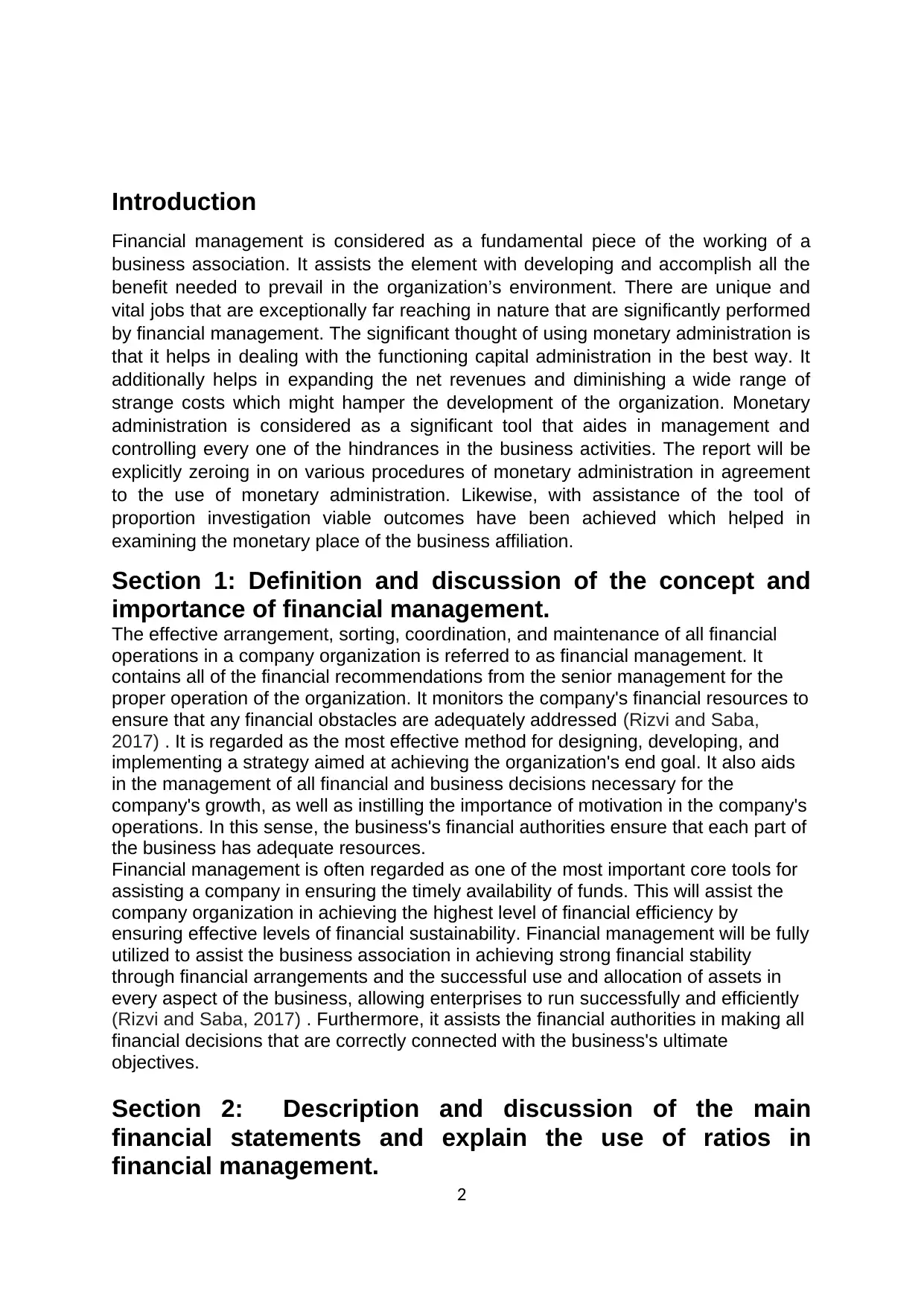
Introduction
Financial management is considered as a fundamental piece of the working of a
business association. It assists the element with developing and accomplish all the
benefit needed to prevail in the organization’s environment. There are unique and
vital jobs that are exceptionally far reaching in nature that are significantly performed
by financial management. The significant thought of using monetary administration is
that it helps in dealing with the functioning capital administration in the best way. It
additionally helps in expanding the net revenues and diminishing a wide range of
strange costs which might hamper the development of the organization. Monetary
administration is considered as a significant tool that aides in management and
controlling every one of the hindrances in the business activities. The report will be
explicitly zeroing in on various procedures of monetary administration in agreement
to the use of monetary administration. Likewise, with assistance of the tool of
proportion investigation viable outcomes have been achieved which helped in
examining the monetary place of the business affiliation.
Section 1: Definition and discussion of the concept and
importance of financial management.
The effective arrangement, sorting, coordination, and maintenance of all financial
operations in a company organization is referred to as financial management. It
contains all of the financial recommendations from the senior management for the
proper operation of the organization. It monitors the company's financial resources to
ensure that any financial obstacles are adequately addressed (Rizvi and Saba,
2017) . It is regarded as the most effective method for designing, developing, and
implementing a strategy aimed at achieving the organization's end goal. It also aids
in the management of all financial and business decisions necessary for the
company's growth, as well as instilling the importance of motivation in the company's
operations. In this sense, the business's financial authorities ensure that each part of
the business has adequate resources.
Financial management is often regarded as one of the most important core tools for
assisting a company in ensuring the timely availability of funds. This will assist the
company organization in achieving the highest level of financial efficiency by
ensuring effective levels of financial sustainability. Financial management will be fully
utilized to assist the business association in achieving strong financial stability
through financial arrangements and the successful use and allocation of assets in
every aspect of the business, allowing enterprises to run successfully and efficiently
(Rizvi and Saba, 2017) . Furthermore, it assists the financial authorities in making all
financial decisions that are correctly connected with the business's ultimate
objectives.
Section 2: Description and discussion of the main
financial statements and explain the use of ratios in
financial management.
2
Financial management is considered as a fundamental piece of the working of a
business association. It assists the element with developing and accomplish all the
benefit needed to prevail in the organization’s environment. There are unique and
vital jobs that are exceptionally far reaching in nature that are significantly performed
by financial management. The significant thought of using monetary administration is
that it helps in dealing with the functioning capital administration in the best way. It
additionally helps in expanding the net revenues and diminishing a wide range of
strange costs which might hamper the development of the organization. Monetary
administration is considered as a significant tool that aides in management and
controlling every one of the hindrances in the business activities. The report will be
explicitly zeroing in on various procedures of monetary administration in agreement
to the use of monetary administration. Likewise, with assistance of the tool of
proportion investigation viable outcomes have been achieved which helped in
examining the monetary place of the business affiliation.
Section 1: Definition and discussion of the concept and
importance of financial management.
The effective arrangement, sorting, coordination, and maintenance of all financial
operations in a company organization is referred to as financial management. It
contains all of the financial recommendations from the senior management for the
proper operation of the organization. It monitors the company's financial resources to
ensure that any financial obstacles are adequately addressed (Rizvi and Saba,
2017) . It is regarded as the most effective method for designing, developing, and
implementing a strategy aimed at achieving the organization's end goal. It also aids
in the management of all financial and business decisions necessary for the
company's growth, as well as instilling the importance of motivation in the company's
operations. In this sense, the business's financial authorities ensure that each part of
the business has adequate resources.
Financial management is often regarded as one of the most important core tools for
assisting a company in ensuring the timely availability of funds. This will assist the
company organization in achieving the highest level of financial efficiency by
ensuring effective levels of financial sustainability. Financial management will be fully
utilized to assist the business association in achieving strong financial stability
through financial arrangements and the successful use and allocation of assets in
every aspect of the business, allowing enterprises to run successfully and efficiently
(Rizvi and Saba, 2017) . Furthermore, it assists the financial authorities in making all
financial decisions that are correctly connected with the business's ultimate
objectives.
Section 2: Description and discussion of the main
financial statements and explain the use of ratios in
financial management.
2
⊘ This is a preview!⊘
Do you want full access?
Subscribe today to unlock all pages.

Trusted by 1+ million students worldwide
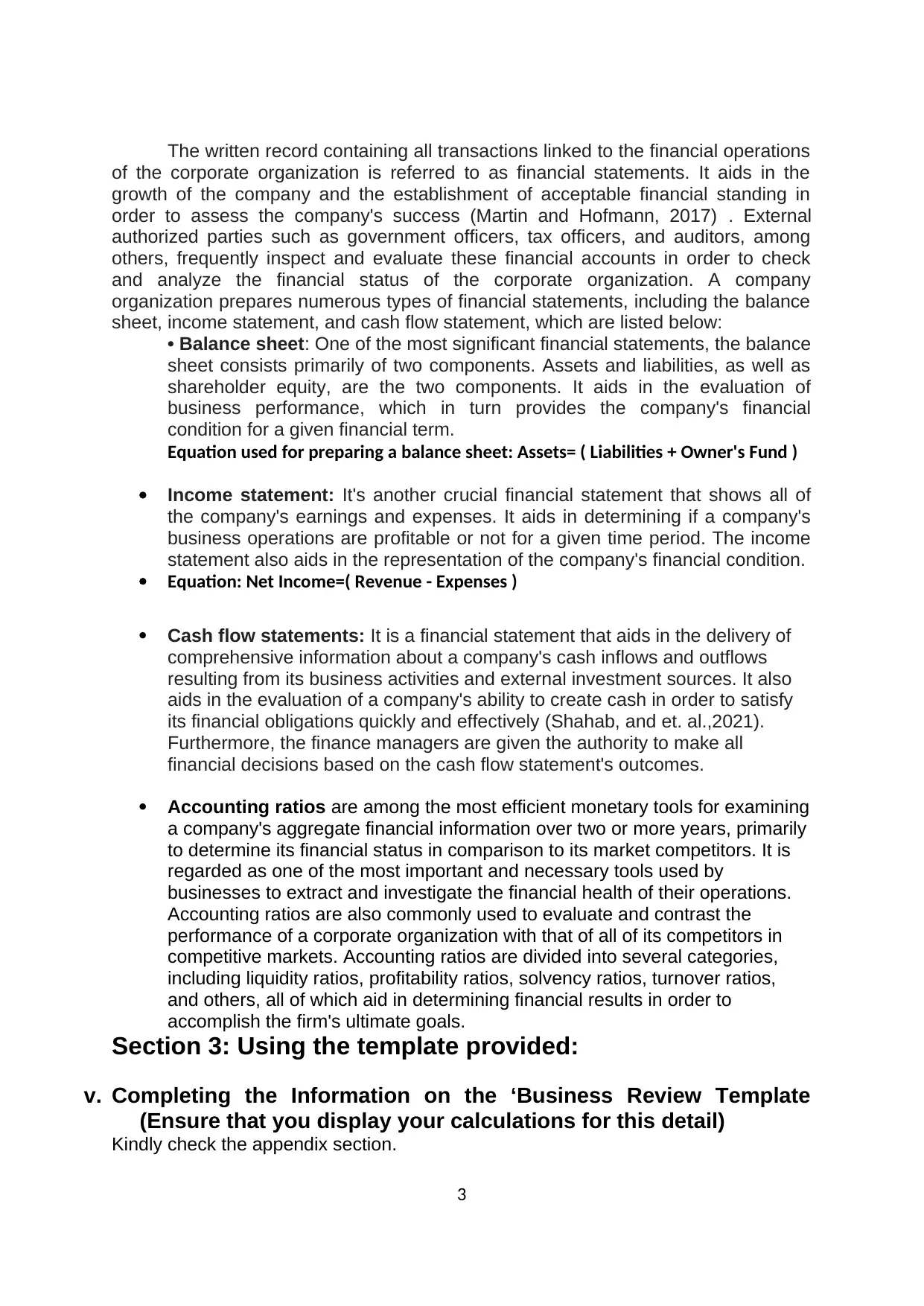
The written record containing all transactions linked to the financial operations
of the corporate organization is referred to as financial statements. It aids in the
growth of the company and the establishment of acceptable financial standing in
order to assess the company's success (Martin and Hofmann, 2017) . External
authorized parties such as government officers, tax officers, and auditors, among
others, frequently inspect and evaluate these financial accounts in order to check
and analyze the financial status of the corporate organization. A company
organization prepares numerous types of financial statements, including the balance
sheet, income statement, and cash flow statement, which are listed below:
• Balance sheet: One of the most significant financial statements, the balance
sheet consists primarily of two components. Assets and liabilities, as well as
shareholder equity, are the two components. It aids in the evaluation of
business performance, which in turn provides the company's financial
condition for a given financial term.
Equation used for preparing a balance sheet: Assets= ( Liabilities + Owner's Fund )
Income statement: It's another crucial financial statement that shows all of
the company's earnings and expenses. It aids in determining if a company's
business operations are profitable or not for a given time period. The income
statement also aids in the representation of the company's financial condition.
Equation: Net Income=( Revenue - Expenses )
Cash flow statements: It is a financial statement that aids in the delivery of
comprehensive information about a company's cash inflows and outflows
resulting from its business activities and external investment sources. It also
aids in the evaluation of a company's ability to create cash in order to satisfy
its financial obligations quickly and effectively (Shahab, and et. al.,2021).
Furthermore, the finance managers are given the authority to make all
financial decisions based on the cash flow statement's outcomes.
Accounting ratios are among the most efficient monetary tools for examining
a company's aggregate financial information over two or more years, primarily
to determine its financial status in comparison to its market competitors. It is
regarded as one of the most important and necessary tools used by
businesses to extract and investigate the financial health of their operations.
Accounting ratios are also commonly used to evaluate and contrast the
performance of a corporate organization with that of all of its competitors in
competitive markets. Accounting ratios are divided into several categories,
including liquidity ratios, profitability ratios, solvency ratios, turnover ratios,
and others, all of which aid in determining financial results in order to
accomplish the firm's ultimate goals.
Section 3: Using the template provided:
v. Completing the Information on the ‘Business Review Template
(Ensure that you display your calculations for this detail)
Kindly check the appendix section.
3
of the corporate organization is referred to as financial statements. It aids in the
growth of the company and the establishment of acceptable financial standing in
order to assess the company's success (Martin and Hofmann, 2017) . External
authorized parties such as government officers, tax officers, and auditors, among
others, frequently inspect and evaluate these financial accounts in order to check
and analyze the financial status of the corporate organization. A company
organization prepares numerous types of financial statements, including the balance
sheet, income statement, and cash flow statement, which are listed below:
• Balance sheet: One of the most significant financial statements, the balance
sheet consists primarily of two components. Assets and liabilities, as well as
shareholder equity, are the two components. It aids in the evaluation of
business performance, which in turn provides the company's financial
condition for a given financial term.
Equation used for preparing a balance sheet: Assets= ( Liabilities + Owner's Fund )
Income statement: It's another crucial financial statement that shows all of
the company's earnings and expenses. It aids in determining if a company's
business operations are profitable or not for a given time period. The income
statement also aids in the representation of the company's financial condition.
Equation: Net Income=( Revenue - Expenses )
Cash flow statements: It is a financial statement that aids in the delivery of
comprehensive information about a company's cash inflows and outflows
resulting from its business activities and external investment sources. It also
aids in the evaluation of a company's ability to create cash in order to satisfy
its financial obligations quickly and effectively (Shahab, and et. al.,2021).
Furthermore, the finance managers are given the authority to make all
financial decisions based on the cash flow statement's outcomes.
Accounting ratios are among the most efficient monetary tools for examining
a company's aggregate financial information over two or more years, primarily
to determine its financial status in comparison to its market competitors. It is
regarded as one of the most important and necessary tools used by
businesses to extract and investigate the financial health of their operations.
Accounting ratios are also commonly used to evaluate and contrast the
performance of a corporate organization with that of all of its competitors in
competitive markets. Accounting ratios are divided into several categories,
including liquidity ratios, profitability ratios, solvency ratios, turnover ratios,
and others, all of which aid in determining financial results in order to
accomplish the firm's ultimate goals.
Section 3: Using the template provided:
v. Completing the Information on the ‘Business Review Template
(Ensure that you display your calculations for this detail)
Kindly check the appendix section.
3
Paraphrase This Document
Need a fresh take? Get an instant paraphrase of this document with our AI Paraphraser
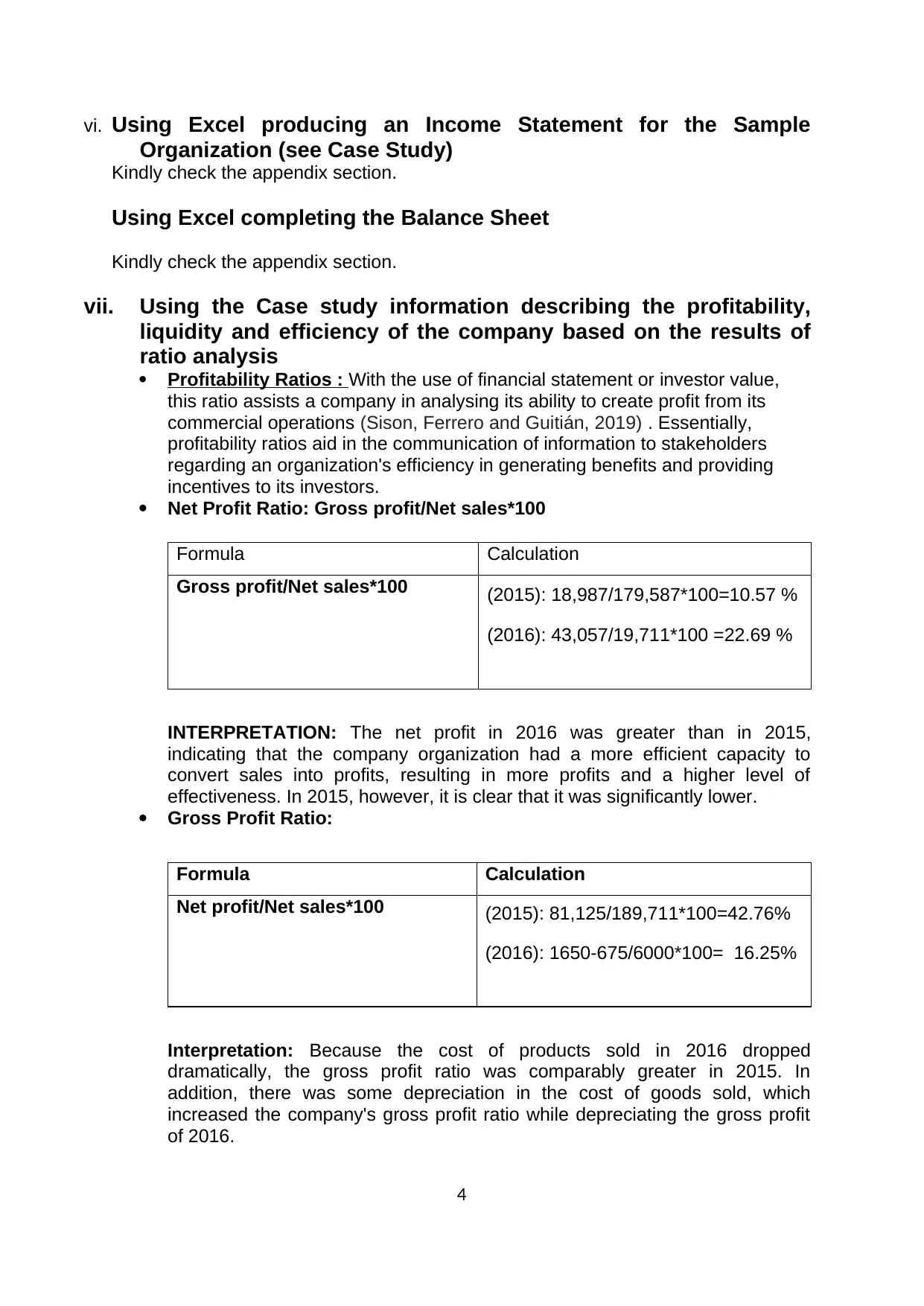
vi. Using Excel producing an Income Statement for the Sample
Organization (see Case Study)
Kindly check the appendix section.
Using Excel completing the Balance Sheet
Kindly check the appendix section.
vii. Using the Case study information describing the profitability,
liquidity and efficiency of the company based on the results of
ratio analysis
Profitability Ratios : With the use of financial statement or investor value,
this ratio assists a company in analysing its ability to create profit from its
commercial operations (Sison, Ferrero and Guitián, 2019) . Essentially,
profitability ratios aid in the communication of information to stakeholders
regarding an organization's efficiency in generating benefits and providing
incentives to its investors.
Net Profit Ratio: Gross profit/Net sales*100
Formula Calculation
Gross profit/Net sales*100 (2015): 18,987/179,587*100=10.57 %
(2016): 43,057/19,711*100 =22.69 %
INTERPRETATION: The net profit in 2016 was greater than in 2015,
indicating that the company organization had a more efficient capacity to
convert sales into profits, resulting in more profits and a higher level of
effectiveness. In 2015, however, it is clear that it was significantly lower.
Gross Profit Ratio:
Formula Calculation
Net profit/Net sales*100 (2015): 81,125/189,711*100=42.76%
(2016): 1650-675/6000*100= 16.25%
Interpretation: Because the cost of products sold in 2016 dropped
dramatically, the gross profit ratio was comparably greater in 2015. In
addition, there was some depreciation in the cost of goods sold, which
increased the company's gross profit ratio while depreciating the gross profit
of 2016.
4
Organization (see Case Study)
Kindly check the appendix section.
Using Excel completing the Balance Sheet
Kindly check the appendix section.
vii. Using the Case study information describing the profitability,
liquidity and efficiency of the company based on the results of
ratio analysis
Profitability Ratios : With the use of financial statement or investor value,
this ratio assists a company in analysing its ability to create profit from its
commercial operations (Sison, Ferrero and Guitián, 2019) . Essentially,
profitability ratios aid in the communication of information to stakeholders
regarding an organization's efficiency in generating benefits and providing
incentives to its investors.
Net Profit Ratio: Gross profit/Net sales*100
Formula Calculation
Gross profit/Net sales*100 (2015): 18,987/179,587*100=10.57 %
(2016): 43,057/19,711*100 =22.69 %
INTERPRETATION: The net profit in 2016 was greater than in 2015,
indicating that the company organization had a more efficient capacity to
convert sales into profits, resulting in more profits and a higher level of
effectiveness. In 2015, however, it is clear that it was significantly lower.
Gross Profit Ratio:
Formula Calculation
Net profit/Net sales*100 (2015): 81,125/189,711*100=42.76%
(2016): 1650-675/6000*100= 16.25%
Interpretation: Because the cost of products sold in 2016 dropped
dramatically, the gross profit ratio was comparably greater in 2015. In
addition, there was some depreciation in the cost of goods sold, which
increased the company's gross profit ratio while depreciating the gross profit
of 2016.
4
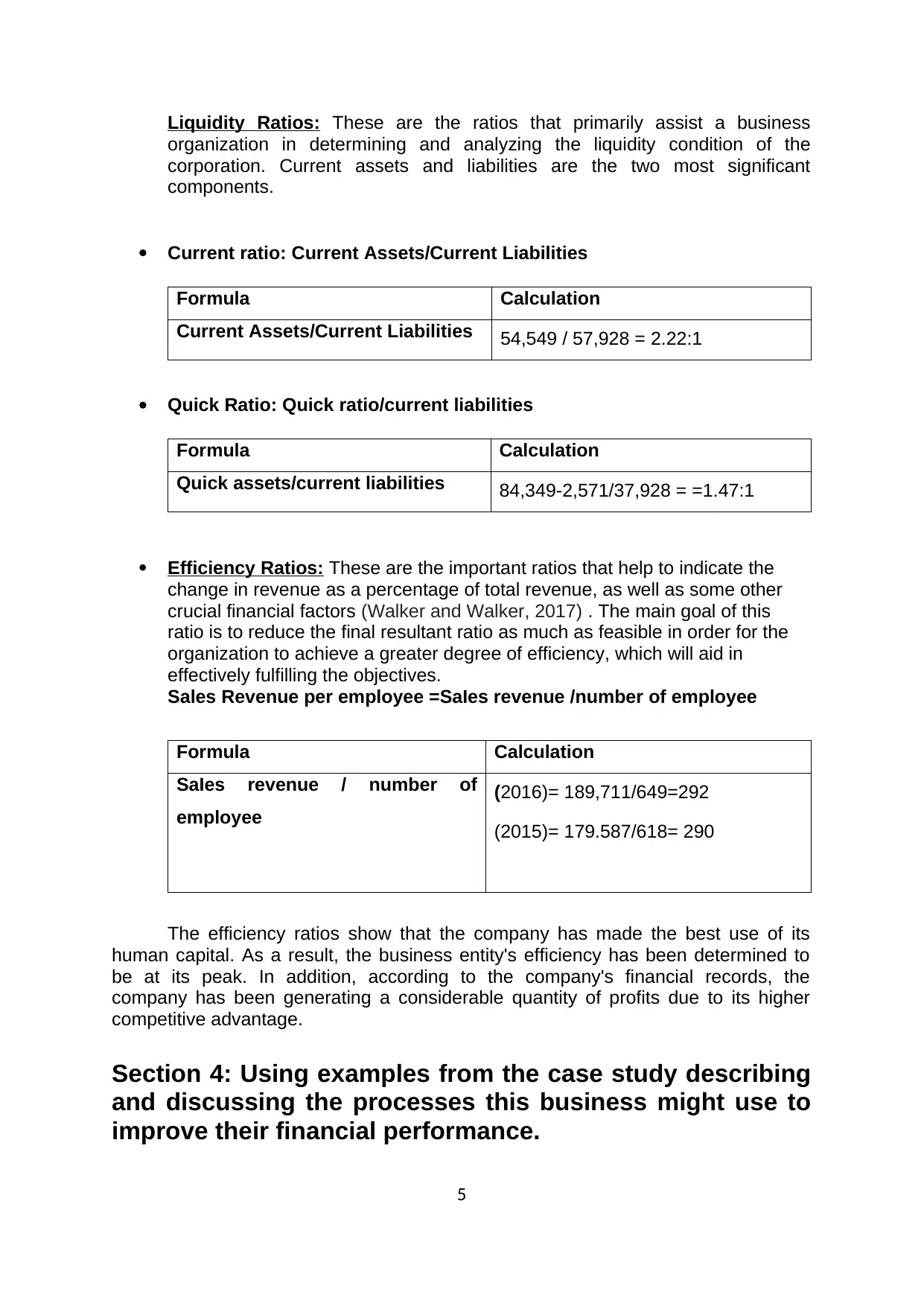
Liquidity Ratios: These are the ratios that primarily assist a business
organization in determining and analyzing the liquidity condition of the
corporation. Current assets and liabilities are the two most significant
components.
Current ratio: Current Assets/Current Liabilities
Formula Calculation
Current Assets/Current Liabilities 54,549 / 57,928 = 2.22:1
Quick Ratio: Quick ratio/current liabilities
Formula Calculation
Quick assets/current liabilities 84,349-2,571/37,928 = =1.47:1
Efficiency Ratios: These are the important ratios that help to indicate the
change in revenue as a percentage of total revenue, as well as some other
crucial financial factors (Walker and Walker, 2017) . The main goal of this
ratio is to reduce the final resultant ratio as much as feasible in order for the
organization to achieve a greater degree of efficiency, which will aid in
effectively fulfilling the objectives.
Sales Revenue per employee =SaIes revenue /number of employee
Formula Calculation
SaIes revenue / number of
employee
(2016)= 189,711/649=292
(2015)= 179.587/618= 290
The efficiency ratios show that the company has made the best use of its
human capital. As a result, the business entity's efficiency has been determined to
be at its peak. In addition, according to the company's financial records, the
company has been generating a considerable quantity of profits due to its higher
competitive advantage.
Section 4: Using examples from the case study describing
and discussing the processes this business might use to
improve their financial performance.
5
organization in determining and analyzing the liquidity condition of the
corporation. Current assets and liabilities are the two most significant
components.
Current ratio: Current Assets/Current Liabilities
Formula Calculation
Current Assets/Current Liabilities 54,549 / 57,928 = 2.22:1
Quick Ratio: Quick ratio/current liabilities
Formula Calculation
Quick assets/current liabilities 84,349-2,571/37,928 = =1.47:1
Efficiency Ratios: These are the important ratios that help to indicate the
change in revenue as a percentage of total revenue, as well as some other
crucial financial factors (Walker and Walker, 2017) . The main goal of this
ratio is to reduce the final resultant ratio as much as feasible in order for the
organization to achieve a greater degree of efficiency, which will aid in
effectively fulfilling the objectives.
Sales Revenue per employee =SaIes revenue /number of employee
Formula Calculation
SaIes revenue / number of
employee
(2016)= 189,711/649=292
(2015)= 179.587/618= 290
The efficiency ratios show that the company has made the best use of its
human capital. As a result, the business entity's efficiency has been determined to
be at its peak. In addition, according to the company's financial records, the
company has been generating a considerable quantity of profits due to its higher
competitive advantage.
Section 4: Using examples from the case study describing
and discussing the processes this business might use to
improve their financial performance.
5
⊘ This is a preview!⊘
Do you want full access?
Subscribe today to unlock all pages.

Trusted by 1+ million students worldwide
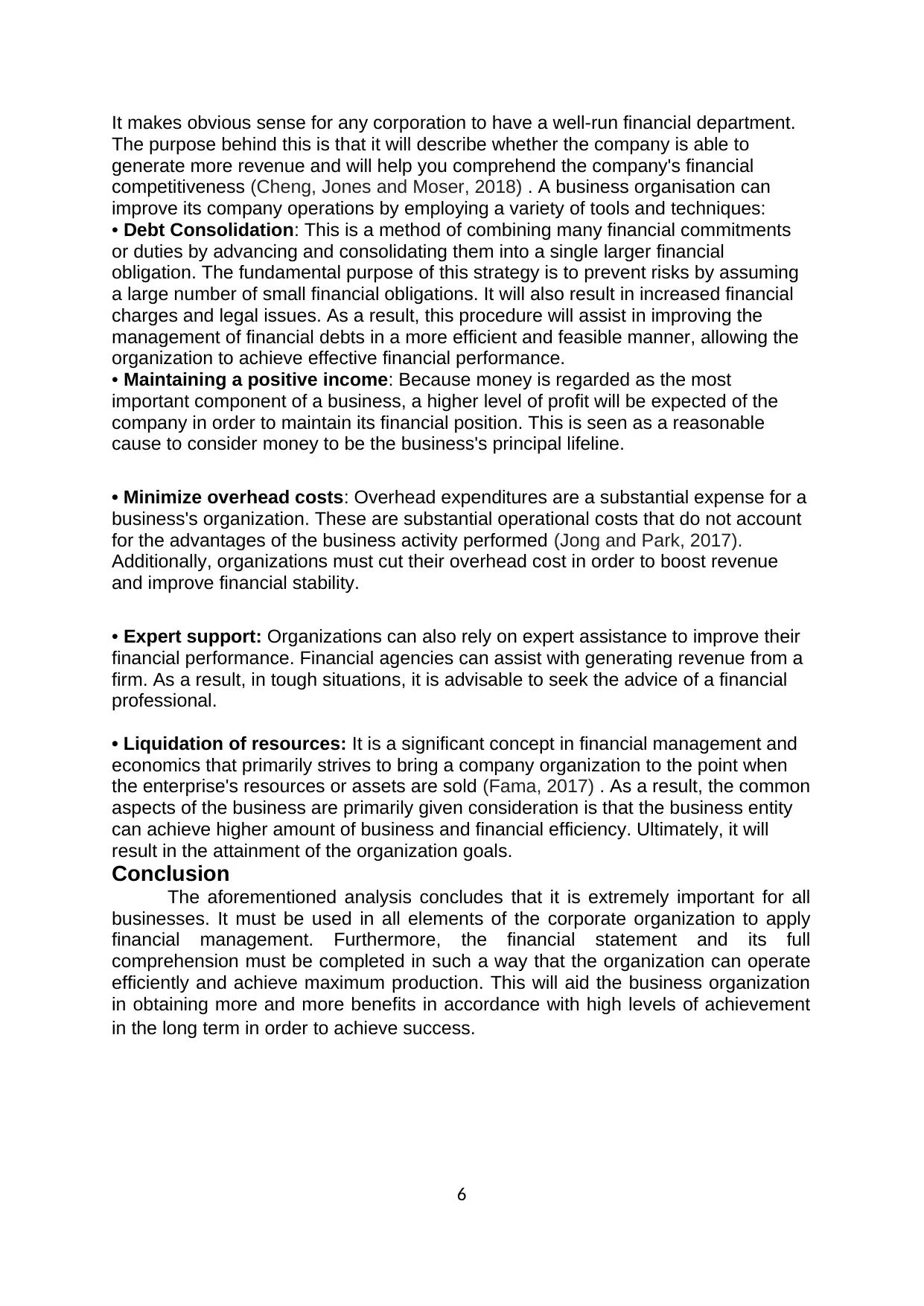
It makes obvious sense for any corporation to have a well-run financial department.
The purpose behind this is that it will describe whether the company is able to
generate more revenue and will help you comprehend the company's financial
competitiveness (Cheng, Jones and Moser, 2018) . A business organisation can
improve its company operations by employing a variety of tools and techniques:
• Debt Consolidation: This is a method of combining many financial commitments
or duties by advancing and consolidating them into a single larger financial
obligation. The fundamental purpose of this strategy is to prevent risks by assuming
a large number of small financial obligations. It will also result in increased financial
charges and legal issues. As a result, this procedure will assist in improving the
management of financial debts in a more efficient and feasible manner, allowing the
organization to achieve effective financial performance.
• Maintaining a positive income: Because money is regarded as the most
important component of a business, a higher level of profit will be expected of the
company in order to maintain its financial position. This is seen as a reasonable
cause to consider money to be the business's principal lifeline.
• Minimize overhead costs: Overhead expenditures are a substantial expense for a
business's organization. These are substantial operational costs that do not account
for the advantages of the business activity performed (Jong and Park, 2017).
Additionally, organizations must cut their overhead cost in order to boost revenue
and improve financial stability.
• Expert support: Organizations can also rely on expert assistance to improve their
financial performance. Financial agencies can assist with generating revenue from a
firm. As a result, in tough situations, it is advisable to seek the advice of a financial
professional.
• Liquidation of resources: It is a significant concept in financial management and
economics that primarily strives to bring a company organization to the point when
the enterprise's resources or assets are sold (Fama, 2017) . As a result, the common
aspects of the business are primarily given consideration is that the business entity
can achieve higher amount of business and financial efficiency. Ultimately, it will
result in the attainment of the organization goals.
Conclusion
The aforementioned analysis concludes that it is extremely important for all
businesses. It must be used in all elements of the corporate organization to apply
financial management. Furthermore, the financial statement and its full
comprehension must be completed in such a way that the organization can operate
efficiently and achieve maximum production. This will aid the business organization
in obtaining more and more benefits in accordance with high levels of achievement
in the long term in order to achieve success.
6
The purpose behind this is that it will describe whether the company is able to
generate more revenue and will help you comprehend the company's financial
competitiveness (Cheng, Jones and Moser, 2018) . A business organisation can
improve its company operations by employing a variety of tools and techniques:
• Debt Consolidation: This is a method of combining many financial commitments
or duties by advancing and consolidating them into a single larger financial
obligation. The fundamental purpose of this strategy is to prevent risks by assuming
a large number of small financial obligations. It will also result in increased financial
charges and legal issues. As a result, this procedure will assist in improving the
management of financial debts in a more efficient and feasible manner, allowing the
organization to achieve effective financial performance.
• Maintaining a positive income: Because money is regarded as the most
important component of a business, a higher level of profit will be expected of the
company in order to maintain its financial position. This is seen as a reasonable
cause to consider money to be the business's principal lifeline.
• Minimize overhead costs: Overhead expenditures are a substantial expense for a
business's organization. These are substantial operational costs that do not account
for the advantages of the business activity performed (Jong and Park, 2017).
Additionally, organizations must cut their overhead cost in order to boost revenue
and improve financial stability.
• Expert support: Organizations can also rely on expert assistance to improve their
financial performance. Financial agencies can assist with generating revenue from a
firm. As a result, in tough situations, it is advisable to seek the advice of a financial
professional.
• Liquidation of resources: It is a significant concept in financial management and
economics that primarily strives to bring a company organization to the point when
the enterprise's resources or assets are sold (Fama, 2017) . As a result, the common
aspects of the business are primarily given consideration is that the business entity
can achieve higher amount of business and financial efficiency. Ultimately, it will
result in the attainment of the organization goals.
Conclusion
The aforementioned analysis concludes that it is extremely important for all
businesses. It must be used in all elements of the corporate organization to apply
financial management. Furthermore, the financial statement and its full
comprehension must be completed in such a way that the organization can operate
efficiently and achieve maximum production. This will aid the business organization
in obtaining more and more benefits in accordance with high levels of achievement
in the long term in order to achieve success.
6
Paraphrase This Document
Need a fresh take? Get an instant paraphrase of this document with our AI Paraphraser
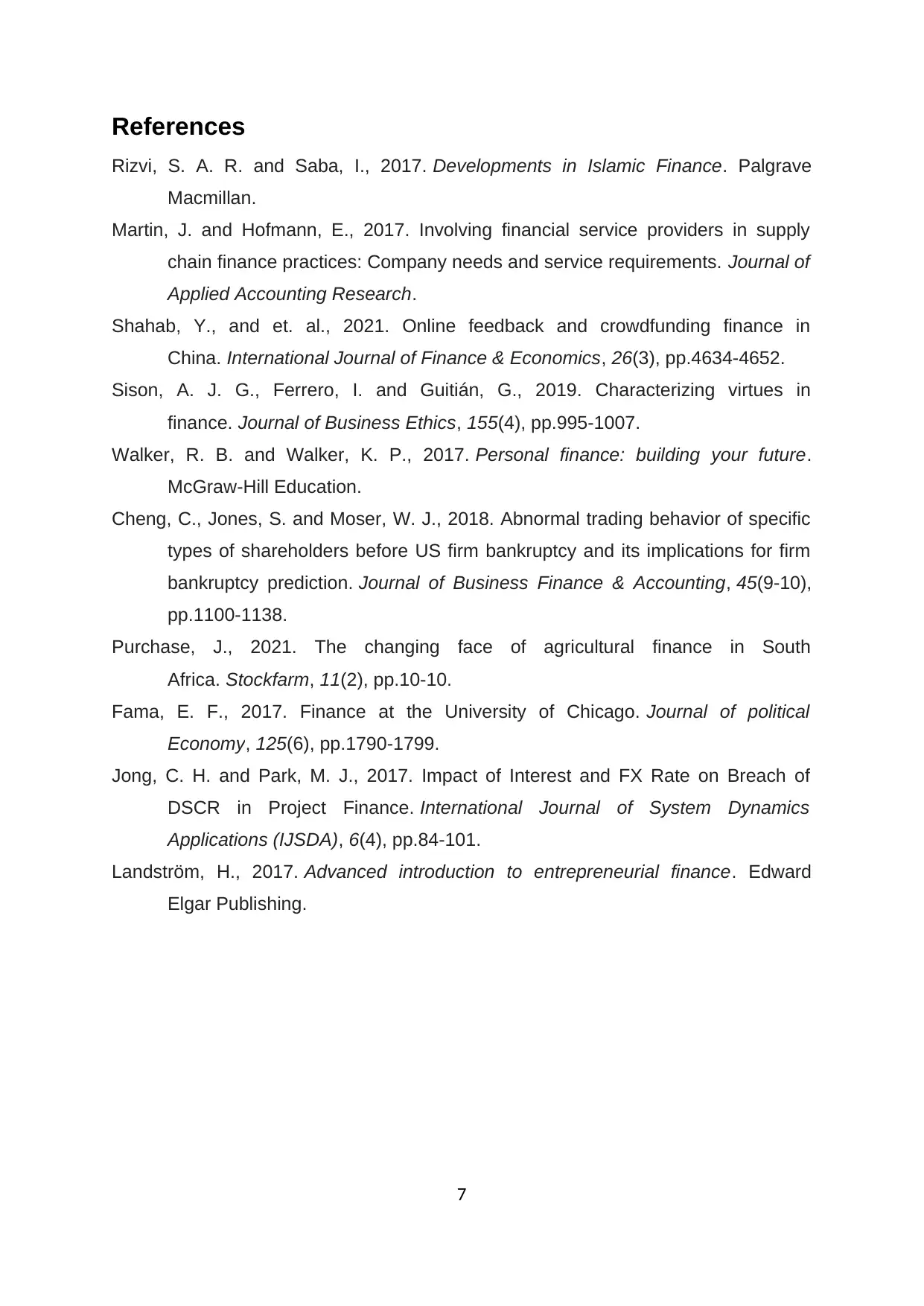
References
Rizvi, S. A. R. and Saba, I., 2017. Developments in Islamic Finance. Palgrave
Macmillan.
Martin, J. and Hofmann, E., 2017. Involving financial service providers in supply
chain finance practices: Company needs and service requirements. Journal of
Applied Accounting Research.
Shahab, Y., and et. al., 2021. Online feedback and crowdfunding finance in
China. International Journal of Finance & Economics, 26(3), pp.4634-4652.
Sison, A. J. G., Ferrero, I. and Guitián, G., 2019. Characterizing virtues in
finance. Journal of Business Ethics, 155(4), pp.995-1007.
Walker, R. B. and Walker, K. P., 2017. Personal finance: building your future.
McGraw-Hill Education.
Cheng, C., Jones, S. and Moser, W. J., 2018. Abnormal trading behavior of specific
types of shareholders before US firm bankruptcy and its implications for firm
bankruptcy prediction. Journal of Business Finance & Accounting, 45(9-10),
pp.1100-1138.
Purchase, J., 2021. The changing face of agricultural finance in South
Africa. Stockfarm, 11(2), pp.10-10.
Fama, E. F., 2017. Finance at the University of Chicago. Journal of political
Economy, 125(6), pp.1790-1799.
Jong, C. H. and Park, M. J., 2017. Impact of Interest and FX Rate on Breach of
DSCR in Project Finance. International Journal of System Dynamics
Applications (IJSDA), 6(4), pp.84-101.
Landström, H., 2017. Advanced introduction to entrepreneurial finance. Edward
Elgar Publishing.
7
Rizvi, S. A. R. and Saba, I., 2017. Developments in Islamic Finance. Palgrave
Macmillan.
Martin, J. and Hofmann, E., 2017. Involving financial service providers in supply
chain finance practices: Company needs and service requirements. Journal of
Applied Accounting Research.
Shahab, Y., and et. al., 2021. Online feedback and crowdfunding finance in
China. International Journal of Finance & Economics, 26(3), pp.4634-4652.
Sison, A. J. G., Ferrero, I. and Guitián, G., 2019. Characterizing virtues in
finance. Journal of Business Ethics, 155(4), pp.995-1007.
Walker, R. B. and Walker, K. P., 2017. Personal finance: building your future.
McGraw-Hill Education.
Cheng, C., Jones, S. and Moser, W. J., 2018. Abnormal trading behavior of specific
types of shareholders before US firm bankruptcy and its implications for firm
bankruptcy prediction. Journal of Business Finance & Accounting, 45(9-10),
pp.1100-1138.
Purchase, J., 2021. The changing face of agricultural finance in South
Africa. Stockfarm, 11(2), pp.10-10.
Fama, E. F., 2017. Finance at the University of Chicago. Journal of political
Economy, 125(6), pp.1790-1799.
Jong, C. H. and Park, M. J., 2017. Impact of Interest and FX Rate on Breach of
DSCR in Project Finance. International Journal of System Dynamics
Applications (IJSDA), 6(4), pp.84-101.
Landström, H., 2017. Advanced introduction to entrepreneurial finance. Edward
Elgar Publishing.
7
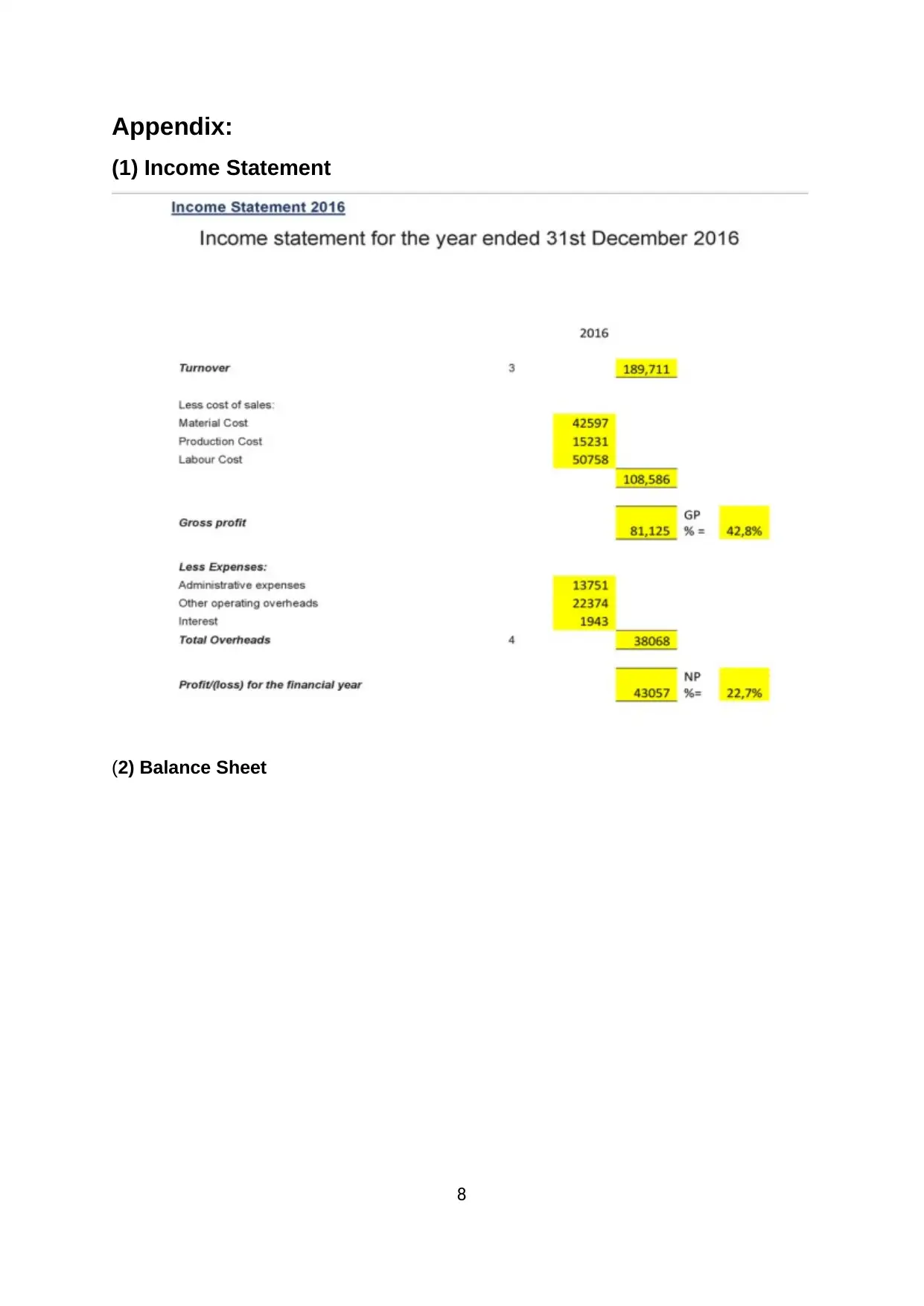
Appendix:
(1) Income Statement
(2) Balance Sheet
8
(1) Income Statement
(2) Balance Sheet
8
⊘ This is a preview!⊘
Do you want full access?
Subscribe today to unlock all pages.

Trusted by 1+ million students worldwide
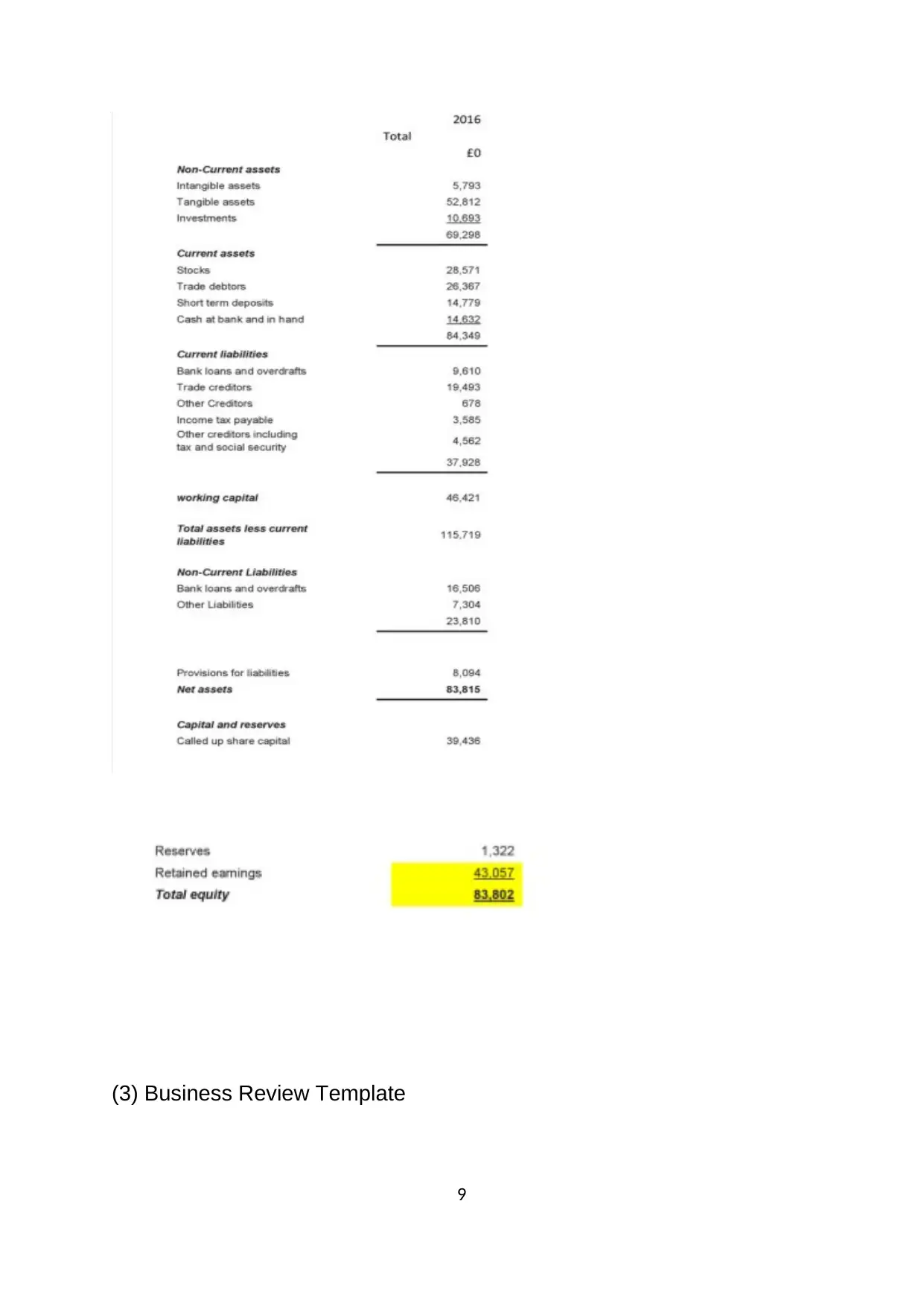
(3) Business Review Template
9
9
Paraphrase This Document
Need a fresh take? Get an instant paraphrase of this document with our AI Paraphraser
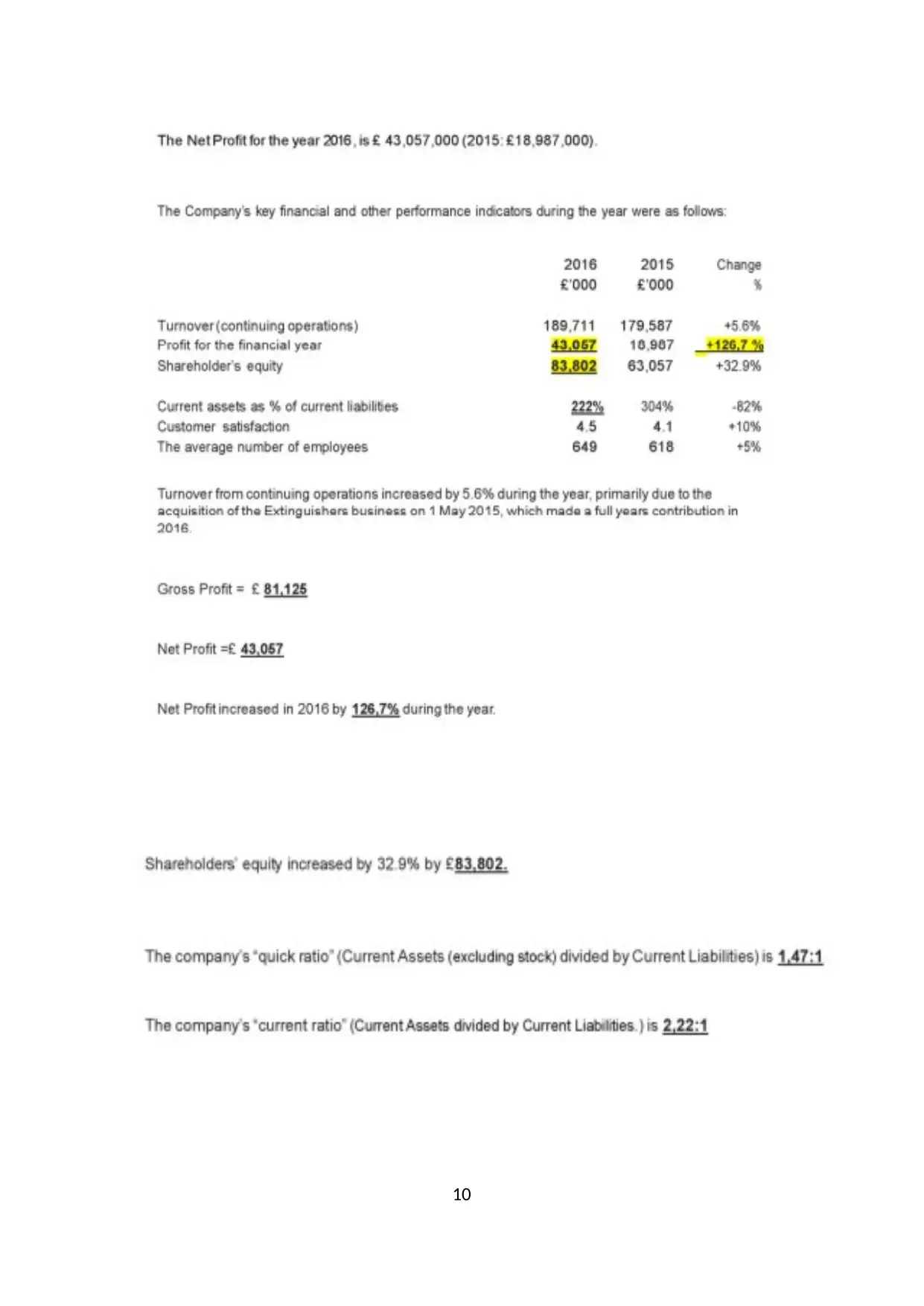
10
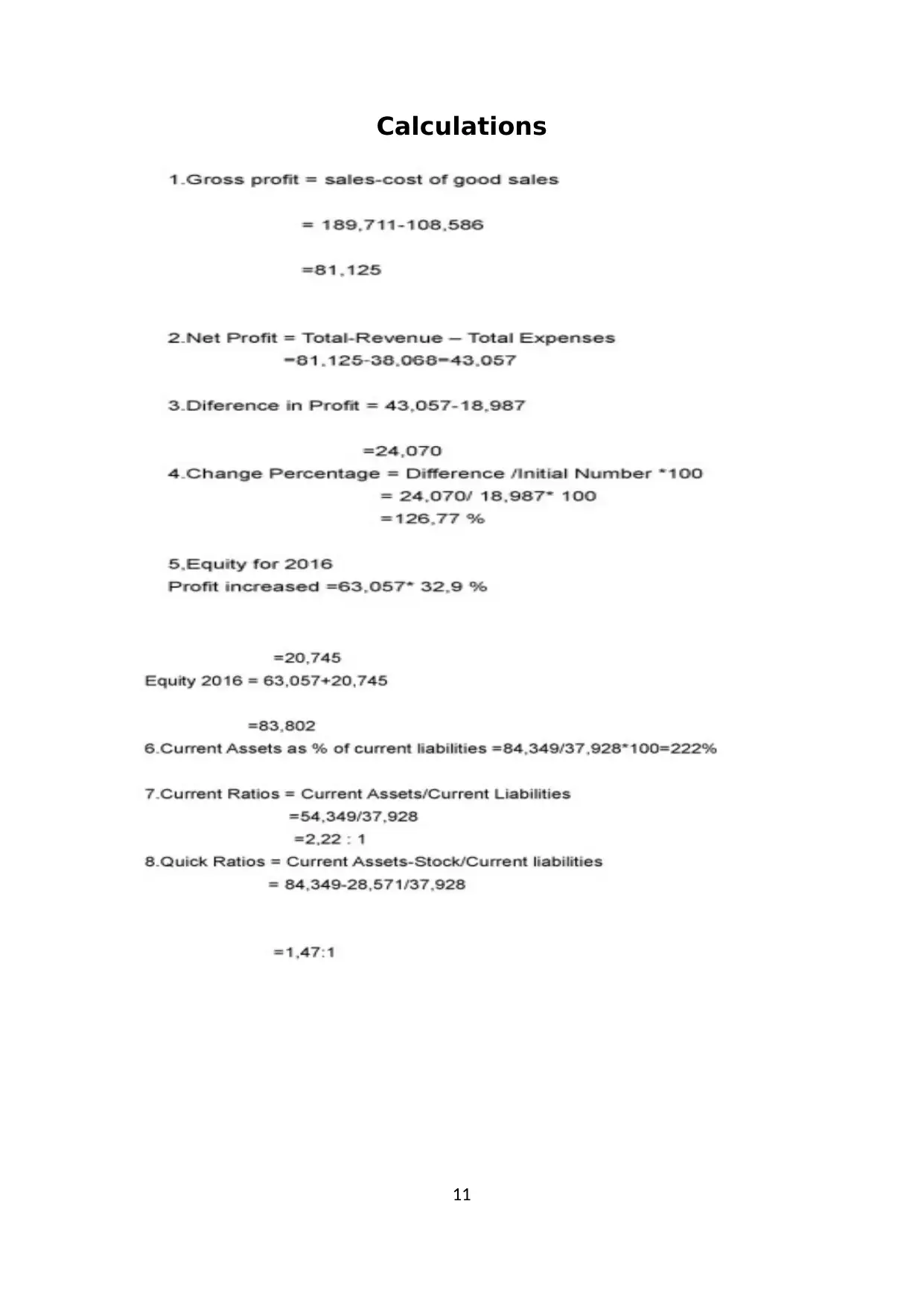
Calculations
11
11
⊘ This is a preview!⊘
Do you want full access?
Subscribe today to unlock all pages.

Trusted by 1+ million students worldwide
1 out of 12
Related Documents
Your All-in-One AI-Powered Toolkit for Academic Success.
+13062052269
info@desklib.com
Available 24*7 on WhatsApp / Email
![[object Object]](/_next/static/media/star-bottom.7253800d.svg)
Unlock your academic potential
Copyright © 2020–2025 A2Z Services. All Rights Reserved. Developed and managed by ZUCOL.


